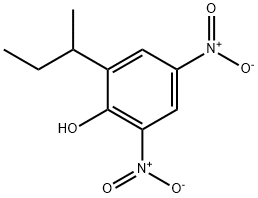Dinoseb, also known as dinitrophenol, can adversely affect the
energy generating reaction in a cell. No cell will live very long
under the influence of high concentrations of dinitrophenol. It
makes the body burn enough energy to result in weight loss.
During the 1930s, physicians unwittingly prescribed certain
types of dinitrophenol as diet pills.
Dow Chemical changed the basic structure of dinitrophenol
slightly to produce dinoseb, which was marketed in 1948.
Dinoseb was widely used as a contact herbicide against
broadleaf weeds.
Dinoseb causes toxicity the same way in plants,
animals, and fungi because all cells contain very similar
biochemical pathways for creating energy from the breakdown
of sugars. Furthermore, photosynthesis in plants
relies on an energy transfer system that is also inhibited by
dinitrophenol.
Given the high toxicity, EPA concluded that the doses
causing the birth defects and the endocrine-disrupting effects
were close to worker exposure levels. Thus, under an emergency
order issued in 1986, EPA suspended dinoseb’s registration.
In August 1990, the EPA banned the burying of
dinoseb-contaminated soils in EPA-approved landfills,
making incineration the only EPA-approved disposal method
for dinoseb-contaminated soil. Incineration is expensive and
incomplete, leaving a noncombustible residue as a further
hazardous waste and some combustion products that could
remain toxic. Therefore, an ex situ soil bioremediation process
was developed by the Sabre Processing company. This process
is known as the SABRE process; it uses an anaerobic consortium
and supplemental carbon source at the field scale to
successfully remediate contaminated soils.




